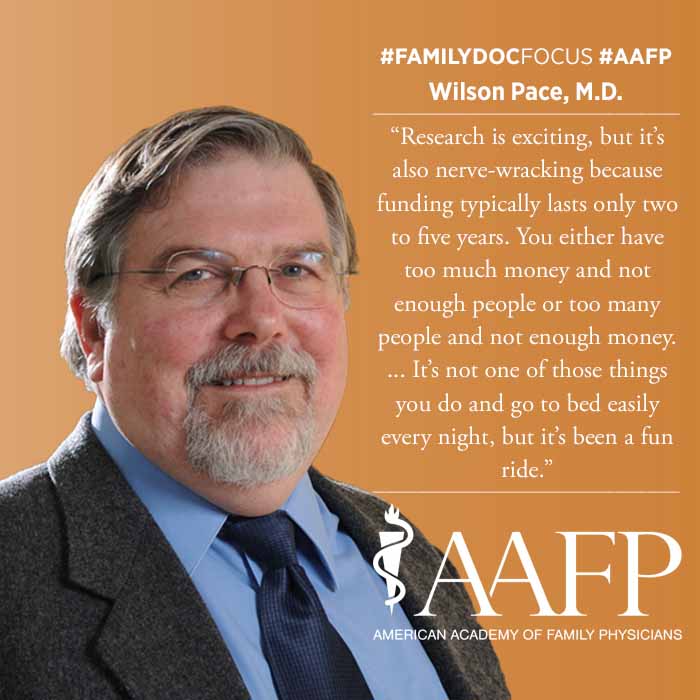Casting a Wide Net for Primary Care Research
October 1, 2018 3:01 pm David Mitchell – With the advent of electronic health records (EHRs), medical researchers embraced a new avenue to analyze treatment options in large patient populations by reviewing data such as that in the EHRs and insurance claims.
Wilson Pace, M.D., wasn't satisfied with early results because he thought the technology had the potential to offer much more.
"Researchers were using claims data, but they didn't have clinical outcomes," said Pace, professor of family medicine at the University of Colorado Health Sciences Center in Aurora. "We needed a better way of doing things."
In 2006, Pace proposed to University of Colorado colleague David West, PhD., that if they mined deidentified electronic patient data on a large scale, they could compare treatments for a wide range of conditions and identify those that are most effective.
"Our goal was to create a network, a group of people working together that would share data and do research together. We support networks that do that."
In 2007, the Agency for Healthcare Research and Quality called for proposals that would improve medical research. The Colorado researchers received two rounds of funding totaling nearly $3 million for three years. That funding launched what eventually came to be known as the DARTNet Institute, a collaboration of practice-based research networks that have built an immense collection of data from EHRs, claims and patient-reported outcomes for both research and quality improvement.
Several more grants followed in the next three years as the network swelled. Today, DARTNet has access to records for more than 30 million patients, pulling data from more than 7,000 primary care sites and roughly 125,000 clinicians across the country.
Some of the networks' studies involve point-of-care data collection and interactions between clinicians and patients, while others are straight data pulls, meaning the physicians in the participating clinics don't have to do additional work.
"We have a lot of organizations trying to do the same thing, which makes this work easier to do," said Pace, DARTNet's chief medical officer. "The work of the clinician goes down, and the amount of data collected goes up. That's the goal."
In 2011, the AAFP provided funds that allowed DARTNet to incorporate as an independent nonprofit organization. In the past five years alone, it has won 34 grants worth $45 million.
Pace, former director of the AAFP's National Research Network, has been a full-time researcher for more than a decade. He said the demands of travel and meetings made it impossible to provide continuity of care, and he left the practice he had been with for more than 25 years.
However, he has few regrets.
"Research is exciting," he said, "but it's also nerve-wracking because funding typically lasts only two to five years. You either have too much money and not enough people or too many people and not enough money. And if you look too far down the road, you're always broke because every grant has an end date. It's not one of those things you do and go to bed easily every night, but it's been a fun ride."
